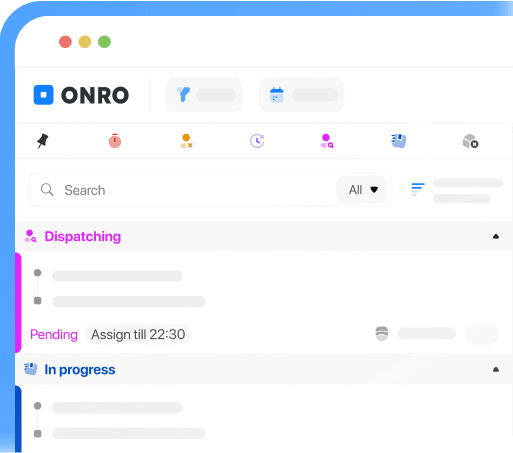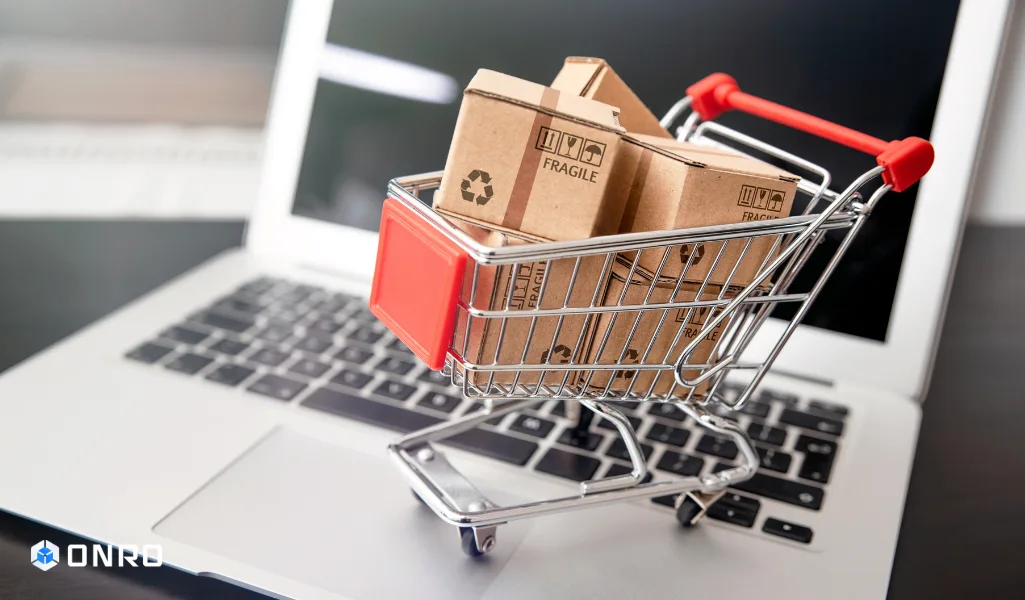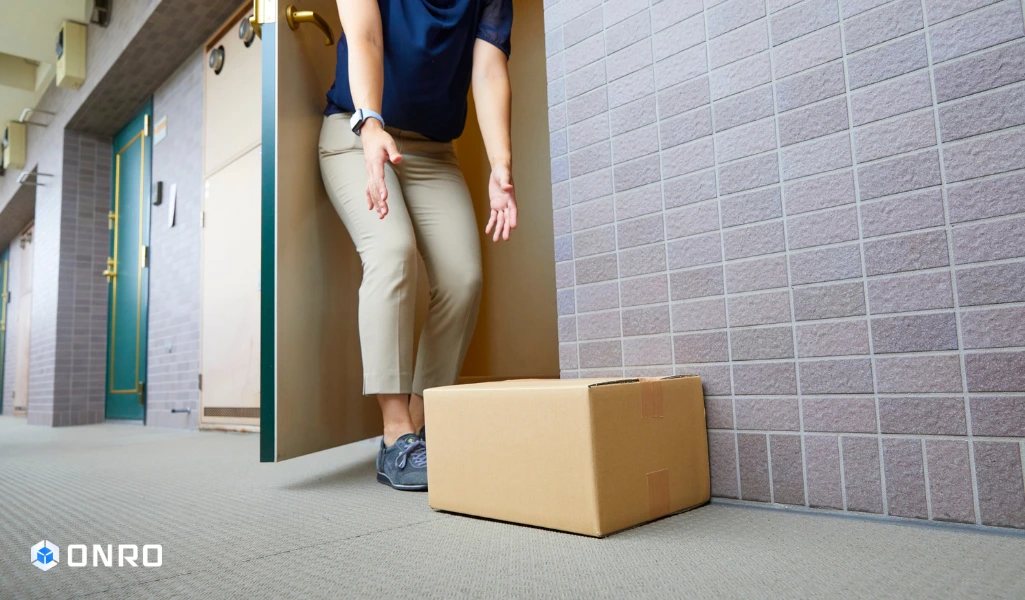E-commerce last-mile delivery is the final stage of order fulfilment, whereby the goods are transported from a local hub to the customer’s door. It is in this interface where customer satisfaction is won or lost.
Key Takeaways
-
On the last step of the order acquisition process, on the last mile, local warehouses deliver to the end customer.
-
Delivery experiences are nowadays taken for granted to be fast, with maximum flexibility, and traceability being a guarantee.
-
Even E-commerce last-mile delivery has been turned from just another cost center into a differentiating service in the e-commerce space.
-
Congestion, delivery distance, high delivery cost, and increased logistical complexities are the major challenges.
-
AI-based route optimization, real-time GPS tracking, automated dispatch, and green transport.
-
Driverless delivery vehicles, micro-fulfillment centers, and same-day or hyperlocal delivery models are trends for e-commerce last-mile delivery.
-
It can increase customer satisfaction and loyalty, reduce operational costs, and raise brand awareness.
-
Building strategic partnerships with the local 3PLs and investing in technologies for scalable and efficient delivery is a must.
E-commerce last-mile delivery will have emerged as the critical stage for ensuring maximum customer satisfaction and loyalty. Shipping parcels from local warehouses directly to customers’ homes creates an easy online shopping experience. Since customers ask for faster, flexible, and transparent deliveries, last-mile logistics has undergone a fundamental change, and building now holds a key competitive advantage. Intelligent solutions such as AI, real-time tracking, and green transportation can help retailers save costs and increase customer retention.
We will define e-commerce last-mile delivery in this guide, its costs, and how brands leverage smart technology and best practices to achieve an edge in this competitive market.
Try Onro for Free
Get your free access to the Onro All-in-one Last Mile Delivery Software.
What is E-commerce Last Mile Delivery?
E-commerce last-mile delivery refers to the final step of order fulfillment when the goods are collected from a local warehouse or distribution center and delivered to the customer’s door. This is what keeps an uninterrupted customer experience. Efficient supply chain and last-mile delivery make up the backbone of all e-commerce logistics.
Due to its competition, the digital retail sector is being shaped by rising consumer expectations of immediate, flexible, and sometimes same-day delivery. It has evolved from being a mere shipping activity to one that competes based on speed of delivery, lower costs, and high standards set to fulfill customer satisfaction. Customer experience within the final mile may just decide the fate of a brand’s reputation and retention.
Why Last Mile Delivery Matters
Enhancing Customer Experience
Customers want all of it until provision, namely, speed, convenience, and visibility in real time. For an e-commerce seller, a standard of service to be bestowed upon goods delivery, the final mile delivery process is the last step. Everything changes from the first-time buyer to a lifetime customer, based on the execution of the last-mile delivery, from order-tracking updates to rescheduling flexibility.
Recently, with the advent of smart logistics technologies, including GPS tracking, automated alerts, and dynamic routing systems, customers were given more visibility and control by retailers. A frictionless last-mile experience builds trust and ensures buyers come back for more.
Driving Customer Retention and Loyalty
Customer loyalty depends on the delivery’s reliability and timeliness. The trust can be destroyed because of any last-minute delay, non-delivery, or lack of communication. But timely and trackable delivery, proper delivery, enhances the customer relationship and retention.
E-commerce last-mile delivery optimization is regarded in retention strategy by top-notch e-commerce brands, who acknowledge that delivery standards can be held just as paramount as product quality.
Impact on Brand Reputation
One failure to deliver can damage the brand name. As more notoriety was granted on word-of-mouth and online reviews, e-commerce operators picked up the situation of last-mile logistics to maintain consistency, transparency, and satisfaction.
Delivery software and apps are increasingly using features such as automated dispatch, delivery notification, and AI-route optimization. Reputation-conscious brands will certainly be offered these options.
Key Challenges of Last Mile Delivery
| Challenge | Causes / Issues | Solutions / Technologies |
|---|---|---|
| Geographical Barriers | Remote areas, long distances, infrastructure limits | Regional carriers, micro-fulfillment centers |
| Urban Congestion and Traffic | Parking issues, dense city traffic | Bike couriers, delivery lockers, dynamic routing |
| Cost Control and Optimization | High fuel, labor costs, returns | AI route planning, smart inventory, real-time analytics |
Overcoming Geographical Barriers
While delivery into rural and far-flung areas poses a very peculiar set of issues, longer distances, faulty infrastructural setups, and more costly transportation stand such delivery apart. Thereby, scaling delivery networks with regional carrier associations must be laid out for an online retailer to maintain service levels in all geographies.
Micro-fulfillment centers and mobile warehouses are solutions that maintain maximum service coverage without any loss in efficiency.
Urban Congestion and Traffic Delays
Some problems posed by the urban environment are congestion, parking issues, and delivery time-sets. Since then, there have been interesting solutions presented for retailers to better cope in dense cities, such as bike couriers, delivery lockers, and urban distribution centers.
The advanced logistics allow the firms to dynamically create routes on the go and deliver in the cities without delay.
Cost Control and Optimization
Fuel costs, labor costs, unsuccessful deliveries, or returns can make the cost of last-mile delivery an average of over 50% of shipment costs. The execution comes with the challenge of keeping costs low and service impeccable.
Establishments use AI-driven route planning, smart inventory placement, and real-time delivery analytics to reduce costs while ensuring great customer satisfaction.
The Rising Importance of Last-Mile Delivery in E-Commerce
The last-mile delivery in a supply chain is the process of moving and delivering products from warehouses to customers, not to mention the gratification of the customer from that perspective. Theoretically, if the goods are handed over smoothly to the customer, it should create a great customer experience, leading to satisfaction and loyalty toward that particular brand. A failed delivery experience can drive customers to a competitor, making last-mile performance a key differentiator in e-commerce.
Try Onro for Free
Get your free access to the Onro All-in-one Last Mile Delivery Software.

Latest Trends and Innovations
| Trend / Innovation | Description |
|---|---|
| Same-Day and Hyperlocal Delivery | Fast, flexible delivery options |
| Data-Driven Last-Mile Analytics | Real-time delivery performance data |
| Real-Time Online Tracking | Live GPS order tracking |
| Green and Eco-Friendly Delivery | Sustainable delivery methods |
| Autonomous Delivery | Drones, robots, and AI delivery |
| Micro Fulfillment Centers (MFCs) | Localized mini-warehouses |
| Automation & Parcel Lockers | Contactless pickups, parcel lockers |
With the rapid rise of online shopping, expectations for product delivery have risen to being delivered in the same day or an hour later. Hence, retailers need to outpace the trend and tech in order to stay cruising through the wind. Below, we look into the seven major trends that are shaping last-mile logistics in 2025 and beyond.
1. Same-Day and Hyperlocal Delivery Models
Same-day delivery and hyperlocal services are now what customers consider a basic utility, not a premium offering. Retail Week claimed that 70 percent of consumers preferred the real-time delivery option or time-delivery slot flexibility.
The types of services can be:
- Scheduled deliveries (fixed time within a 2-3 day window)
- On-demand deliveries (within hours and mainly for groceries and pharmacies)
- Local courier integrations for Buy Online, Pick-up In-store (BOPIS)
Such deliveries help retailers expedite supply while remaining cost-efficient to satisfy specific customer demands, such as delivery-time personalization.
2. Data-Driven Last-Mile Analytics
As opposed to traditional logistics methods, contemporary logistics relies on data collection and real-time analytics. According to Gartner, by 2025, nearly half of the logistics companies will invest in delivery analytics solutions. These solutions provide insights into operational processes, enhance delivery speeds, and improve customer service.
Key technologies used in e-commerce last-mile delivery analytics:
- Interactive dashboard: Provide real-time intelligence on delivery KPIs (key performance indicators).
- Heat maps: Identify underserved delivery zones and locate areas for warehouse expansion.
- Automated reports: Save time and effort compared to dynamic digital reports and manual reports.
It reduced costs, optimized delivery routes, smarter inventory decisions.
3. Real-Time Online Tracking
Customers want to have some sort of live tracking on their orders. Moreover, with the delivery companies that can perform economy last-mile deliveries, they can reduce their logistics costs by 20%.
The importance of real-time tracking of e-commerce last-mile delivery are:
- Customers require full visibility of delivery progress.
- GPS tracking breeds trust, reduces ‘where is my order’ calls, and thereby increases satisfaction; indeed, retailers would now be able to check for delays and quickly resolve them.
Real-time tracking is, therefore, no longer a standard or luxury but is considered the foundation of any loyalty program.
4. Green and Eco-Friendly Last-Mile Delivery
Eco-logistics is ranked among the top considerations for a customer, as 89% of buyers today would prefer the alternative of sustainable delivery (Sifted). Out of these, 69% would favor environmentally responsible brands.
E-commerce last-mile delivery solutions could include:
- Recyclable packaging
- Electric vehicles and e-bikes
- Drones and other autonomous eco-transport solutions
Why it matters: Going green boosts brand image, drives loyalty, and aligns with global ESG goals.
5. Autonomous Delivery (Drones, Robots, and Self-Driving Vans)
The automated last-mile delivery market is an exponentially growing market, increasing from $0.9 billion in 2023 and may attain a value of $4.2 billion by 2030 (Markets and Markets).
E-commerce last-mile delivery automation is about:
- AI for automated route optimization: fuel delay and cost are minimized.
- Self-service parcel locker or parcel locker network.
- Other integrations (e.g., order platform, POS, CRM).
Impact: lower staffing needs, higher efficiency, scalable delivery without sacrificing service.
6. Micro Fulfillment Centers (MFCs)
Consumers are looking for options. The report in the Retail Week explains that 70% of consumers would desire to have flexible delivery options that also consider speed and personalization. The chief modes of delivery are:
- On-demand (delivery on the same day)
- Scheduled delivery (time slots preferred)
- Pickup locker or local collection points
Result: More delivery options = higher convenience = better retention.
7. Ready-Made Automation Solutions and Parcel Lockers
Parcel lockers, being the major entry hubs for last-mile deliveries into any city or suburb, are thus very well positioned. After pick-up, the delivery occurs completely contactless from any place on order and at any time during the day. The few advantages offered by the self-service system are as follows:
- There are fewer delivery attempts mistakenly aborted or missed,
- There is less last-mile traffic or congestion, and
- The last is the tracking of the order mechanism.
Future of Ecommerce Last Mile Delivery
Adopting Smart Technology
The inception of innovative technology has seriously savaged the last-mile industries. AI algorithms, unmanned delivery vehicles, drone delivery, and IoT tracking enhance the efficacy of operations and customer satisfaction.
The real-time visibility tools and predictive analytics can solve actual problems easily and smooth the delivery of goods.
Leveraging Third-Party Logistics (3PL)
The logistics company keeps the 3PL name because it provides the delivery operations, so that the kitchen is insulated from heavy logistics. The companies offer 3PLs as an end-to-end solution, including route management, last-mile warehousing, real-time communication, etc., all to satisfy the growing demands of online retailers.
Being regional, the 3PLs give them flexibility in their capacity model. A fast-paced retail environment ensures that they cannot exist without upholding service levels.
The Strategic Value of Last-Mile E-Commerce in the 21st Century
Delivery operations stand for expansion within e-commerce, making it preferable to work with an existing 3PL company, which lacks the heavy logistical burden on the kitchen. They cater to 3PLs from A to Z with common services such as route management, last-mile warehousing, and real-time communication-interfacing to address new-age retailing demands.
3PLs have regional knowledge, where they have the flexibility of capacity. A rushed warehouse with retail makes it a necessity to adhere to all service levels.
Shifting retail from stores towards being digital-first experiences makes that final mile an emotional point for the brand to the customer. Those who are willing to invest in adaptive logistics, new age technologies, and fulfillments with customers will lead.
FAQ| E-commerce Last-mile Delivery
Final-mile delivery moves a package from the warehouse to the customer’s door.
The method, essentially comprising a whole lot of stops and labor, filling up of fuel tanks, with battery charges timed to varying degrees, all become factors that push the cost upwards.
Route optimization, GPS-tracking, e-POD, and delivery management software like Onro act as enablers.
Smart routing, flexible time slots for delivery, use of local 3PLs, and real-time vehicle tracking facilitate this concept.
Conclusion
In the fast-paced world of digital commerce, E-commerce Last-Mile Delivery is envisioned not as a last step, but as one of the most important ones. Whether you’re striving to improve customer satisfaction, cut down on costs, or have trends in delivery under your control, intelligent last-mile solutions must be at your disposal.
Leveraging AI routing, real-time tracking, and automation for efficient delivery methods, are you prepared to put them into practice?
Get a free demo of Onro to identify ways that could optimize operations, satisfy customers, and support the e-commerce business-to-business-good one happy delivery way at a time.
Try Onro for Free
Get your free access to the Onro All-in-one Last Mile Delivery Software.


